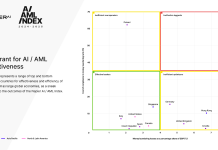The digital transformation of KYC activity has offered asset managers the ability to create more efficient onboarding processes in a market with increasing demands to manage risk.
The phenomenon enables asset managers to understand whom they are doing business with, the risks of doing business with them, and to address those risks at scale not just at onboarding, but on a perpetual basis.
This regulatory focus comes, in part, due to the vast growth in the asset management sector, a growth that inevitably leads to an increased risk of money laundering, fraud and other types of financial crime.
The digital transformation of KYC activity has has long since helped create more efficient onboarding processes, but asset managers are now understanding the increasing demands they face to manage risk and achieve know your customer (KYC) compliance.
Organisations such as Moody’s Analytics are designed to help manage the KYC processes and risk on a continual basis throughout the client lifecycle, leveraging automated solutions, and enabling asset managers to make the most of their resources. It also delivers better customer experiences because, while AML and KYC checks are essential, they can frustrate customers.
At onboarding, a risk profile can be created through a workflow of integrated, automated KYC checks. The risk profile is digitally captured and the customer data maintained in one place.
Then continuous monitoring of real-time, risk-relevant data – including sanctions, watchlists, adverse media, and PEPs information – can take place through a process of perpetual KYC.
When there is a change of circumstance however, risk alerts related to a customer profile can trigger enhanced due diligence. Compliance teams can then focus their attention where it’s needed, asking customers for documentation and information when necessary.
Read the full post here.
Keep up with all the latest FinTech news here
Copyright © 2023 FinTech Global











